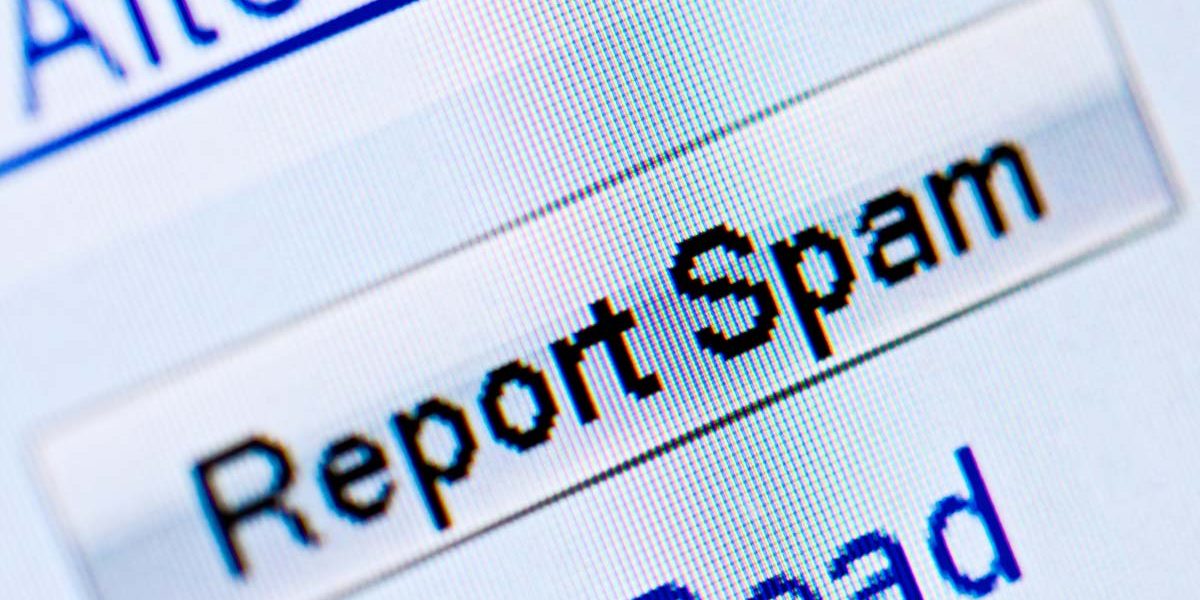
Spam: features of the quarter
Online dating
The dating theme is typical for spam emails, but in the third quarter of 2015 we couldn’t help but notice the sheer variety appearing in these types of mailings. We came across some rather interesting attempts to deceive recipients and to bypass filters, as well as new types of spam mailings that were bordering on fraud.
The main aim of spammers exploiting the dating theme is usually to advertise recently created dating sites that are still relatively unknown. The owners of these sites resort to spamming to attract the largest possible audience to their resource. The messages often address different categories of recipients, for example, dating sites for older people, married people or the religious.
Yet another type of advert is for marriage agencies offering a selection of brides (mainly from Russia and Ukraine) to foreign suitors. This type of spam is usually distributed in the English-language segment of the Internet. The messages contain an invitation to register on a site, a short text promising to find the perfect life partner and a link leading to the advertised site.
Q3 2015, the percentage of spam in email traffic accounted for 54.2% #KLReport #infosec
Tweet
Similar emails can also be sent from a “bride”. This type of spam is closer to the fraudulent tactics used by ‘Nigerian letters’. The email is supposedly written by a girl who provides a few details about herself, about how hard her life is in the Russian hinterland, and her dreams of meeting Prince Charming. A photo is often attached, though not necessarily a photo of the “bride” – it could easily be taken from someone’s social networking page and attached to make the message look more convincing. That’s why emails from different girls may contain the same photos. However, the messages vary: a host of synonyms are used to bypass spam filters. The usual channel for receiving feedback is via email. The address is different for each email – they are obviously created in large quantities on free email services for each mass mailing. After replying, the user will, at best, receive a notification that the address is non-existent. The worst case scenarios will see his address targeted by further spam mailings and he may even get caught up in a scam where the girl asks for money to buy a ticket to come and see him. Once she gets the money, she disappears without a trace.
A similar method is used to advertise dating sites “for adults”. The emails contain either an invitation to register on the site and a promise of intimate dating, or a message from a girl who is looking for a partner for intimate relations plus a link to the resource with her alleged profile. This type of spam is often disguised as personal notifications on social networking sites, as well as image or audio files sent via instant messengers. As a result, the site is hidden, and the user cannot clearly identify what it is until he follows all the links. Of course, the contents of these messages aim to arouse the recipient’s interest and make him click the links, often due to the flirty content or heavy hints and intimate photos.
And finally, yet another type of spam we detected in Q3 was quite blatantly fraudulent. During the quarter we observed a mass mailing that prompted recipients to send a text message to a specific telephone number; in return a girl promised to send intimate photos of herself. The text of the emails varied, as did the mobile numbers specified in them. We sent messages to some of the numbers and found that they were not premium-rate numbers as might be expected, and users were not charged for sending a text message. We got a reply from a girl, but after a couple of answers it became clear we were dealing with a robot whose task was to make us download an application so we could continue chatting and receive the promised photos. As a result, we received several text messages containing short links that led to an article about useful mobile apps that appeared in a well-known American newspaper. During the redirect to the article an archive with mobile malware was downloaded to the user’s phone.
Seasonal malicious spam
The amount of seasonal spam traditionally increases in summer. This is true for both advertising and malicious spam. The holiday season saw spam with a travel theme: fake notifications from booking services, airlines and hotels were used to spread malicious programs.
Fake notifications from major international airlines and booking services were detected by Kaspersky Lab as Trojan-Downloader.JS.Agent.hhy and Trojan-Downloader.Win32.Upatre.
We came across similar emails supposedly sent by popular airlines that had messages in French. The text informed recipients that the attachment contained an e-ticket. In fact, the ZIP archive contained Trojan.Win32.Xtrat Trojan and the DDoS bot Nitol (the module used to organize DDoS attacks).
In July, fraudsters tried to trick users by sending fake notifications on behalf of hotels. The message thanked the recipients for staying in their hotel and asked them to view the attached bill. The attached archive actually contained Trojan-Downloader.Win32.Upatre.dhwi, which in turn downloaded and ran Trojan- Banker.Win32.Dyre (viewed as 98. ***. **. 39/cv17.rar) by clicking the links written in the body of the downloader.
In addition to fake emails sent on behalf of well-known companies we observed a message in English from an individual. The email contained a request to change a room booking because some friends had cancelled.
The text in the email could easily be seen as a legitimate request from a client; however, the ZIP attachment contained Trojan-Downloader.JS.Agent.hhi that downloaded Backdoor.Win32.Androm.
Spammer tricks
The text in a standard phishing email is usually in the body of the message, while personal information is entered on a web page that opens after clicking a fraudulent link in the text, or in the HTML fields of a page attached to the email, or is sent back in a reply email. The latter is most typical when asking recipients to confirm the address and the password for an email account.
Q3 2015, Top 3 biggest sources of spam globally were the #USA, #Vietnam & #China #KLReport
Tweet
In Q3 2015, cybercriminals came up with a new way of distributing phishing emails and bypassing spam filters. The text of the phishing email and the fake link were included in a PDF document attached to the email. After clicking the link, a standard phishing page opened and the user was asked to enter his personal information. The majority of emails utilizing the new technique imitated bank notifications. The body of these messages usually contained a short text describing the problem; sometimes there was no text at all.
It should be noted that the spammers used well-known phrases and tricks in the text of the emails: notifications about an account being blocked, the need to pass a verification procedure, security issues, an investigation into phishing incidents, etc. As usual, the fraudulent links were masked by legitimate links and text fragments.
However, there were emails with detailed text in the message body providing genuine links to official bank resources. The phishing notification was included in the PDF attachment.
Our colleagues also came across a different type of phishing message using Mediabox objects in attached PDF files.
A Mediabox object is a document opened by a mouse click and used to redirect the user to a phishing website.
Statistics
Proportion of spam in email traffic
Percentage of spam in email traffic, April-September 2015
After some relatively stable months in the second quarter the percentage of spam in global email traffic began to change again. A slight growth in July and August of 2015 was followed by a noticeable drop in September. As a result, the average percentage of spam in Q3 amounted to 54.19% – slightly higher than the average for the previous quarter.
Sources of spam by country
Sources of spam by country, Q3 2015
The US (15.34%) remained the biggest source of spam in Q3. Vietnam was second with 8.42% of global spam, compared to 3.38% in the previous quarter. China rounded off the Top 3 (7.15%) – its share remained unchanged from the previous quarter.
Russia’s share (5.79%) dropped by 2.03 p.p., pushing it from second to fourth position. It was followed by Germany (4.39%) and France (3.32%) – their shares changed only slightly compared to Q2.
Spam email size
Spam email size distribution, Q2 2015 and Q3 2015
The most commonly distributed emails were very small – up to 2 KB (79.05%). The proportion of these emails grew from the previous quarter (13.67 p.p.), while the share of emails sized 20-50 KB (3.32%) fell by approximately the same number of percentage points. The share of all other emails saw no significant change from Q2 of 2015.
Malicious email attachments
Top 10 malicious programs sent by email, Q3 2015
Trojan-Spy.HTML.Fraud.gen remained the most popular malicious program sent by email. This program is a fake HTML page sent via email that imitates an important notification from a large commercial bank, online store, or software developer, etc.
Second and ninth places in the Top 10 are occupied by Trojan-Downloader.JS.Agent.hhi and Trojan-Downloader.JS.Agent.hfq, respectively. Both are an obfuscated Java-script. The downloaders use ADODB.Stream technology that allows them to download and run DLL, EXE and PDF files.
Trojan-Downloader.VBS.Small.lj and Trojan-Downloader.VBS.Agent.aqp came third and sixth, respectively. These VBS scripts, which also use the ADODB.Stream technology, download ZIP archives and run malware extracted from them.
Q3 2015, Upatre was the most common malware family sent by email #KLReport
Tweet
Trojan-Downloader.MSWord.Agent.oq came fourth. This malicious program is a DOC file with embedded VBS macros that run when the document is opened. The macros download another malicious VBS script from the cybercriminals’ site and run it on the victim’s computer.
Email-Worm.Win32.Mydoom.l rounds off the Top 5. This network worm is spread as an email attachment via file-sharing services and writable network resources. It harvests email addresses from infected computers so they can be used for further mass mailings. The worm also enables attackers to remotely control the infected computer.
Trojan-Downloader.HTML.Meta.ay, Trojan-Downloader.HTML.Agent.aax and Trojan-Downloader.HTML.Meta.aq were seventh, eighth and tenth in the rating, respectively. They all are HTML pages which, when opened, redirect users to a rigged site. Once there, a victim usually encounters a phishing page or is asked to download a program – Binbot, a binary option trading bot. The three malicious programs spread via email attachments and the only difference between them is the link which redirects users to the rigged sites.
Malware families
As in the previous two quarters, Upatre (9.46%) was the most common malware family. Malware from this family downloads the Trojan banker known as Dyre, Dyreza, Dyzap.
The MSWord.Agent family (5.55%) remained in second position. To recap, these malicious programs are DOC files with an embedded macro written in Visual Basic for Applications (VBA), which runs on opening the document. It downloads and runs other malware, such as malicious programs from the Andromeda family.
In third place was the VBS.Agent (5.44%) family. Unlike MSWord.Agent, the malicious programs of this family use the embedded VBS script. To download and run other malware on the user’s computer they use the ADODB.Stream technology.
Countries targeted by malicious mailshots
Distribution of email antivirus verdicts by country, Q3 2015
There were some significant changes in the Top 3 countries targeted most often by mailshots in Q3 2015. Russia’s appearance in third place (7.56%) was the biggest surprise: its share grew by 2.82 p.p., pushing it up two places from fifth.
Germany (18.47%) remained on top, although its contribution dropped by 1.12 p.p. compared to Q2. Brazil ended the quarter in second place (11.7%) – the amount of malicious spam originating from there almost doubled compared to Q2.
The UK (4.56%), which was second in Q2, ended Q3 in sixth place.
Special features of malicious spam
In spam traffic at the beginning of September we came across a large-scale malicious mass mailing containing emails imitating a non-delivery auto-reply sent by an email server. The text and subject of the message looked very similar to an automatic notification; however, the sender address belonged to an individual, which raised doubts about the legitimacy of the email. The attached ZIP archive named Google_drive_1711 was also suspicious because notifications from email services do not normally contain attachments. Closer inspection revealed that the archive included Trojan Trojan-Downloader.JS.Agent.hhi, which in turn downloaded Backdoor.Win32.Androm.
At the beginning of the third quarter cybercriminals were actively sending out emails in French containing macro viruses. The macros that we detected belonged to a category of Trojan downloaders and were used to download and install the banking Trojan Dridex on victim computers. To deceive the recipient, the fraudsters imitated a notification about the receipt of an order or an invoice.
In July, spammers exploited the theme of loans to spread malicious files that are now traditional for advertising spam. Some scammer emails offered a loan attracting potential customers with very favorable terms, low interest rates, etc. Other messages notified the recipient that his loan application had been approved. Interestingly, this content can also be seen in ordinary advertising spam, but malicious spam usually contains an attachment masquerading as detailed information about the loan.
Interestingly, malicious emails with Trojan-Downloader.Win32.Upatre in the attachment were sent to employees at different companies.
Phishing
In Q3 2015, the Anti-Phishing system was triggered 36,300,537 times on computers of Kaspersky Lab users, which is 6 million times more than the previous quarter. Of them, 15,764,588 attempts were blocked by our heuristic detection components and 20,535,949 by signature detection components. 839,672 phishing wildcards were added to the Kaspersky Lab databases.
The country where the largest percentage of users is affected by phishing attacks was once again Brazil (21.7%). In Q3 2015, the share of those attacked increased by 11.33 p.p., meaning Brazil returned to the same sort of figures last seen in Q1.
Geography of phishing attacks*, Q3 2015
* Number of users on whose computers the Anti-Phishing system was triggered as a percentage of the total number of Kaspersky Lab users in the country
The percentage of attacked users in Japan and China also grew considerably (+10.9 p.p. and +7.85 p.p., respectively), which saw these countries ranked second and third in the rating.
Top 10 countries by percentage of users attacked:
| Country | % of users | |
| 1 | Brazil | 21.07 |
| 2 | Japan | 16.86 |
| 3 | China | 15.08 |
| 4 | Vietnam | 14.5 |
| 5 | Bangladesh | 13.32 |
| 6 | Nigeria | 13.05 |
| 7 | Russia | 12.91 |
| 8 | Kazakhstan | 12.85 |
| 9 | India | 12.44 |
| 10 | Columbia | 12.25 |
Organizations under attack
The statistics on phishing targets is based on detections of Kaspersky Lab’s anti-phishing component. It is activated every time a user enters a phishing page while information about it is not included in Kaspersky Lab databases. It does not matter how the user enters this page – by clicking the link contained in a phishing email or in the message in a social network or, for example, as a result of malware activity. After the activation of the security system, the user sees a banner in the browser warning about a potential threat.
In the third quarter of 2015, the ‘Global Internet portals’ category (30.93%) topped the rating of organizations attacked by phishers although its share decreased by 11.42 p.p. from the previous quarter. The share of ‘Social networking sites’ (21.44%) increased by 6.69 p.p. In third place came ‘Banks’ with 18.07% (+4.65 p.p.). The ‘Online games’ category also increased by half and accounted for 4.02%.
Distribution of organizations affected by phishing attacks, by category, Q3 2015
The proportion of phishing attacks on organizations in the ‘Cloud data storage’ category increased by 0.26 p.p. and amounted to 1.06%. Users are increasingly using cloud storage technology, thus attracting the attention of cybercriminals. The stolen information is used for blackmail, sold to third parties or used in targeted attacks.
This type of phishing is often distributed via email or social networks in the form of a message inviting users to download a document allegedly uploaded to a popular cloud service. Messages can arrive from a compromised account from a user’s friend list or, in the case of email, on behalf of a cloud service administrator.
Q3 2015, Anti-Phishing system was triggered more than 36M times on computers of @Kaspersky Lab users #KLReport
Tweet
Phishing pages imitating well-known cloud storage sites are used to distribute various malicious programs. In such cases, a user automatically downloads a malicious program to his computer by clicking the link on the page.
Below is an example of an attack where the user is asked to download an important PDF document. The link in the email leads to a phishing page imitating the site of the popular cloud service Dropbox.
Example of a phishing attack targeting users of Dropbox
In addition to stealing data stored in the cloud and spreading malware, cybercriminals often use the Dropbox name to steal the victim’s email account data.
Example of a phishing page using the Dropbox brand
Here is yet another example of phishing, with the scammers trying to steal the user’s AppleID and password for iCloud.
Example of a phishing attack on iCloud users
Among other things, if successful, the attackers gain access to any content purchased by the user as well as his email account.
Top 3 organizations attacked
Fraudsters continue to focus the greatest part of their non-spear phishing attacks on the most popular brands. In this way they are trying to increase the chances of success for their latest phishing attack. In more than half of cases the heuristic component of Anti-Phishing is triggered when a user follows a link to phishing pages hiding behind the names of more than 30 well-known companies.
The Top 3 organizations most often attacked by phishers account for 26.39% of all phishing links detected in Q3 2015.
| Organization | % of all detected phishing links | |
| 1 | Yahoo! | 15.38 |
| 2 | VKontakte | 9.44 |
| 3 | 8.95 |
In Q3 2015, the leading three organizations targeted by phishers saw a few changes. Yahoo! remained top with 15.38%, although its share almost halved (-13.65 p.p.). The Russian social networking site VKontakte (9.44%) came second. Facebook (8.95%) fell by 1.49 p.p. and moved from second to third place.
Conclusion
In Q3 of 2015, the percentage of spam in email traffic accounted for 54.2%, a 0.8 p.p. drop from the previous quarter. The Top 3 biggest sources of spam distributed worldwide were: the US (15.3%), Vietnam (8.4%) and China (7.2%).
The holiday season saw an increase in tourism-related malicious spam. Cybercriminals sent out fake notifications from well-known booking services, airlines and hotels, as well as emails from individuals. They typically included attached archives with different Trojan downloaders.
Trojan-Spy.HTML.Fraud.gen remained the most popular malicious program sent by email. As in the previous two quarters, the rating of the most popular malware families was topped by Upatre. Germany topped the ranking of countries whose users were most often targeted by mailshots – 18.5% of antivirus detections were registered there.
A particular feature of Q3 was a new trick used in phishing emails – in order to bypass spam filters they placed the text of the email and fraudulent link in an attached PDF document rather than in the message body.
In Q3, Kaspersky Lab solutions blocked more than 36 million attempts to follow links to phishing pages, which is 6 million more than in the previous quarter. The country where the largest percentage of users is affected by phishing attacks was once again Brazil (21.7%).
Spam and phishing in Q3 2015

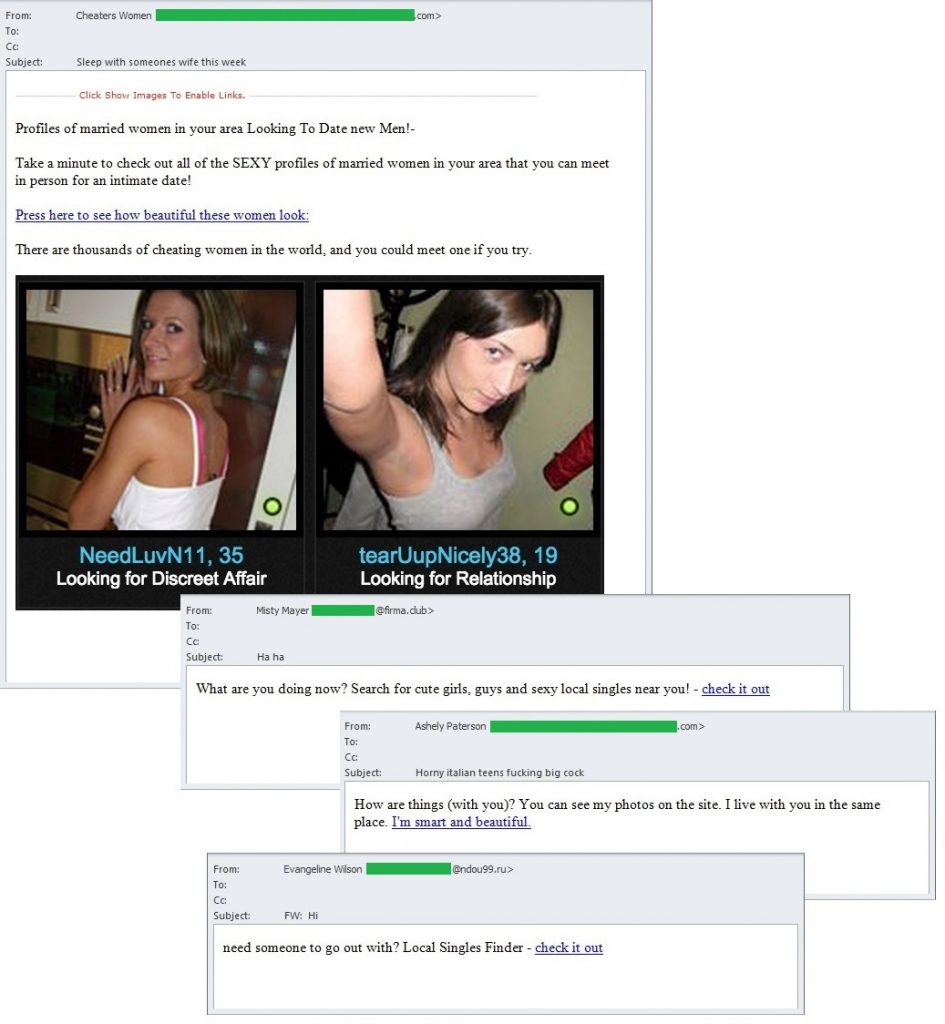
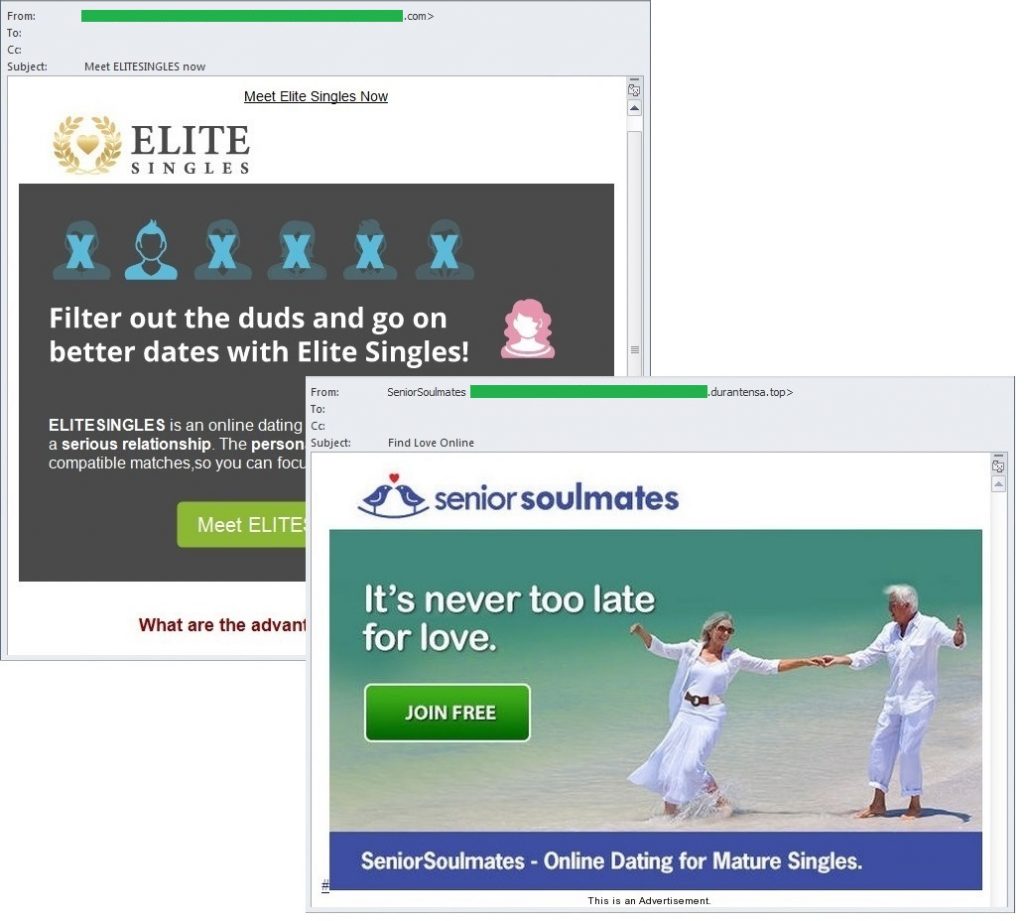
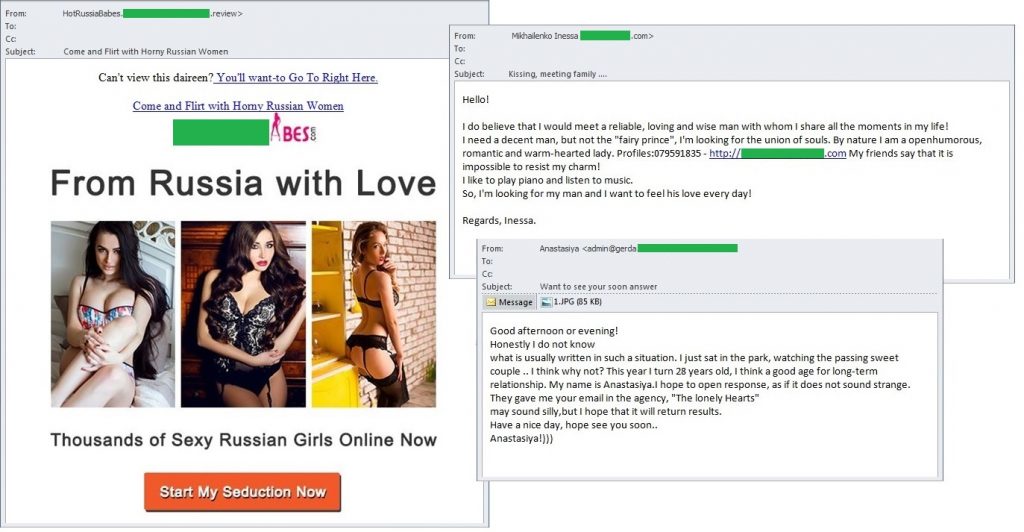
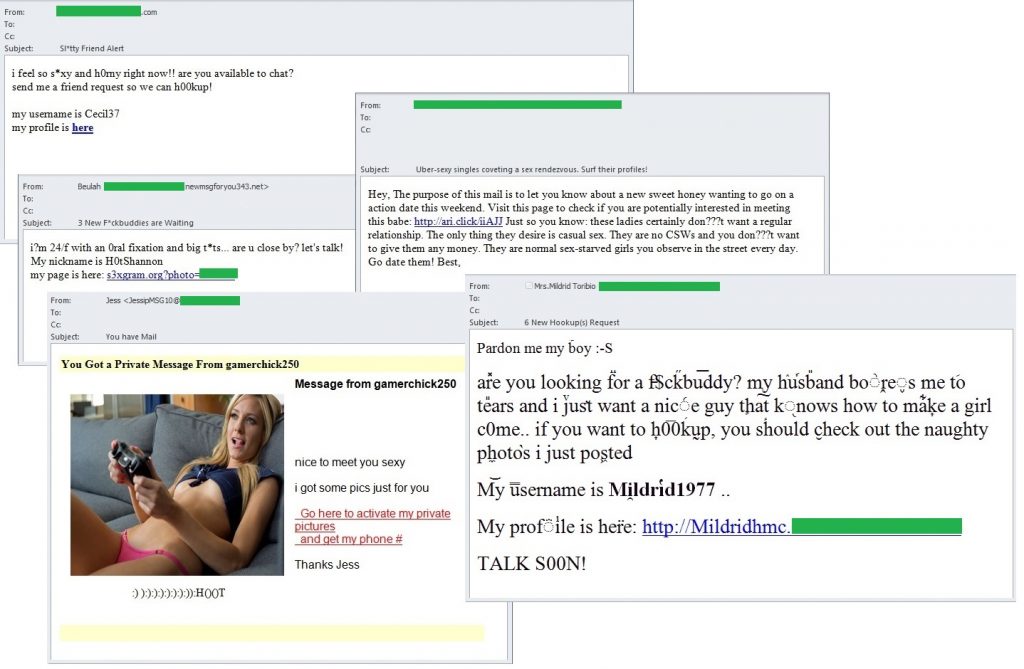

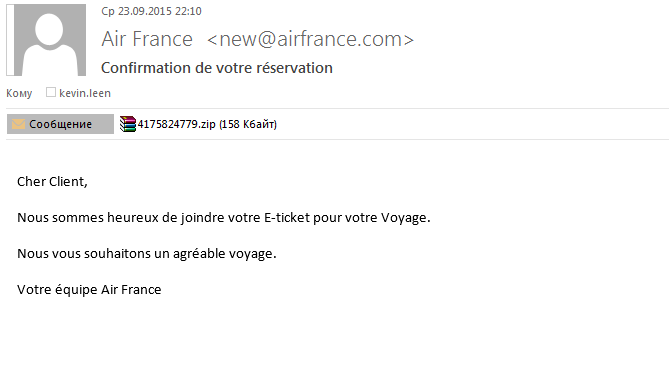

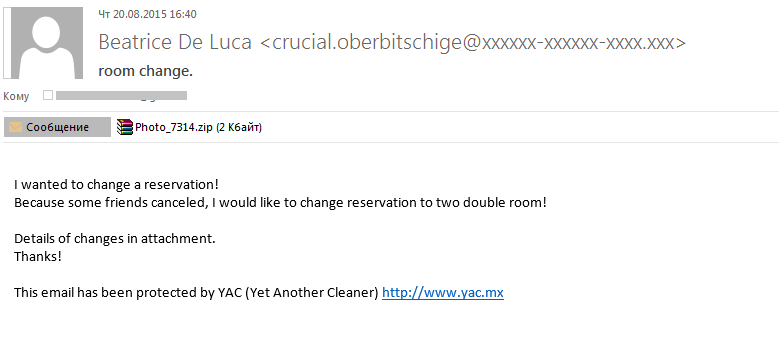
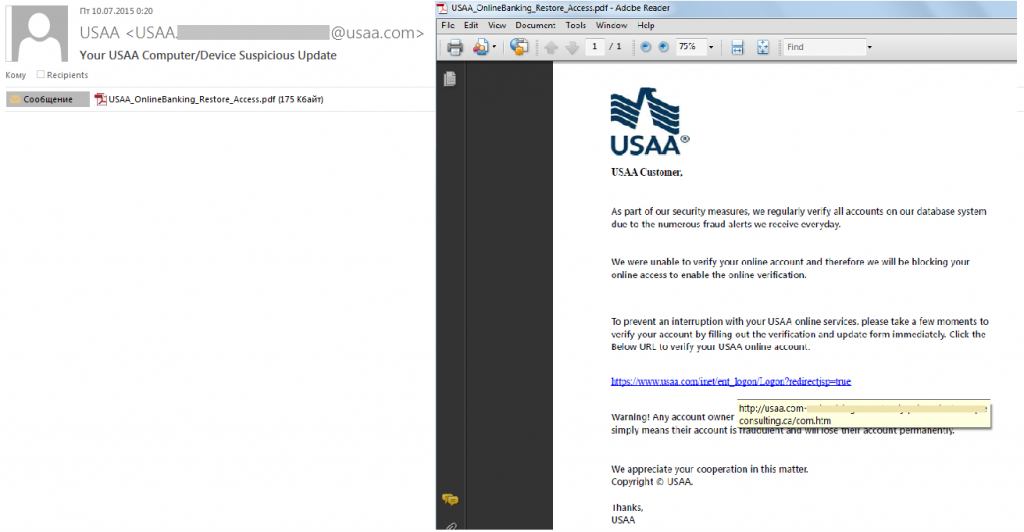


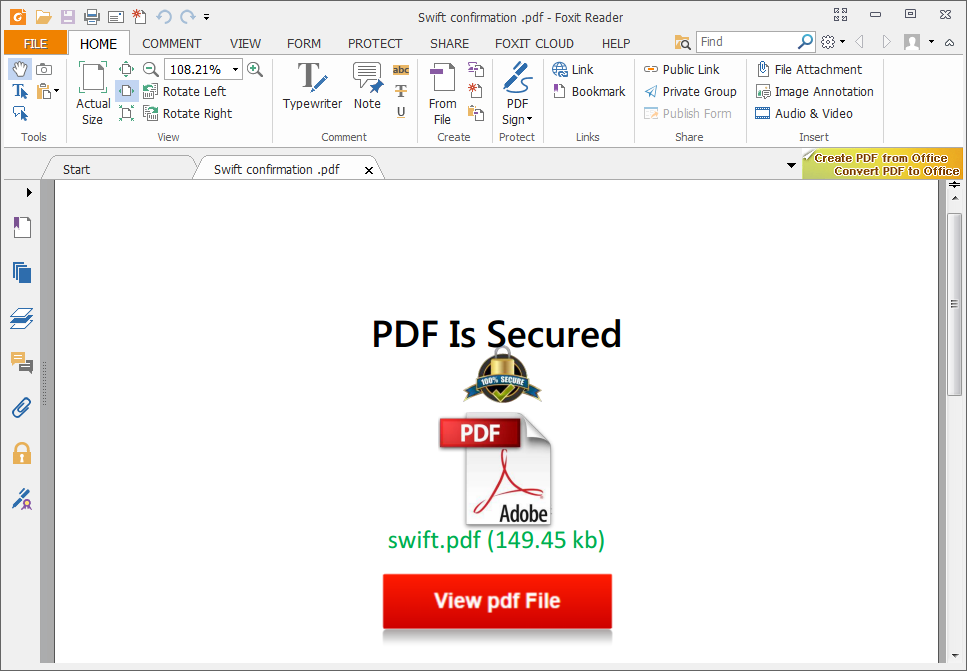
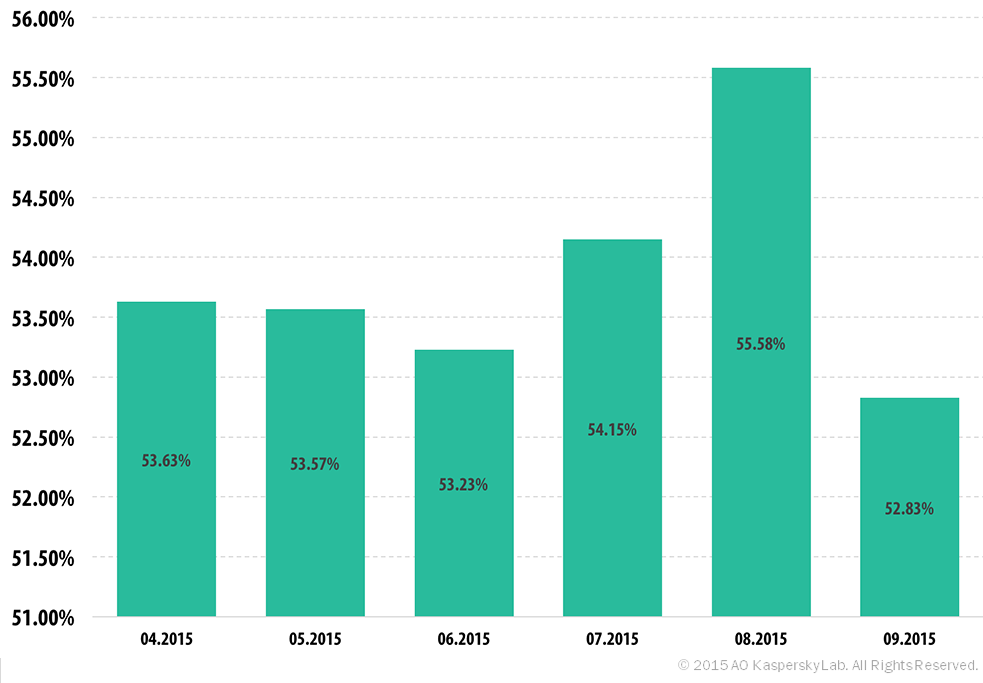

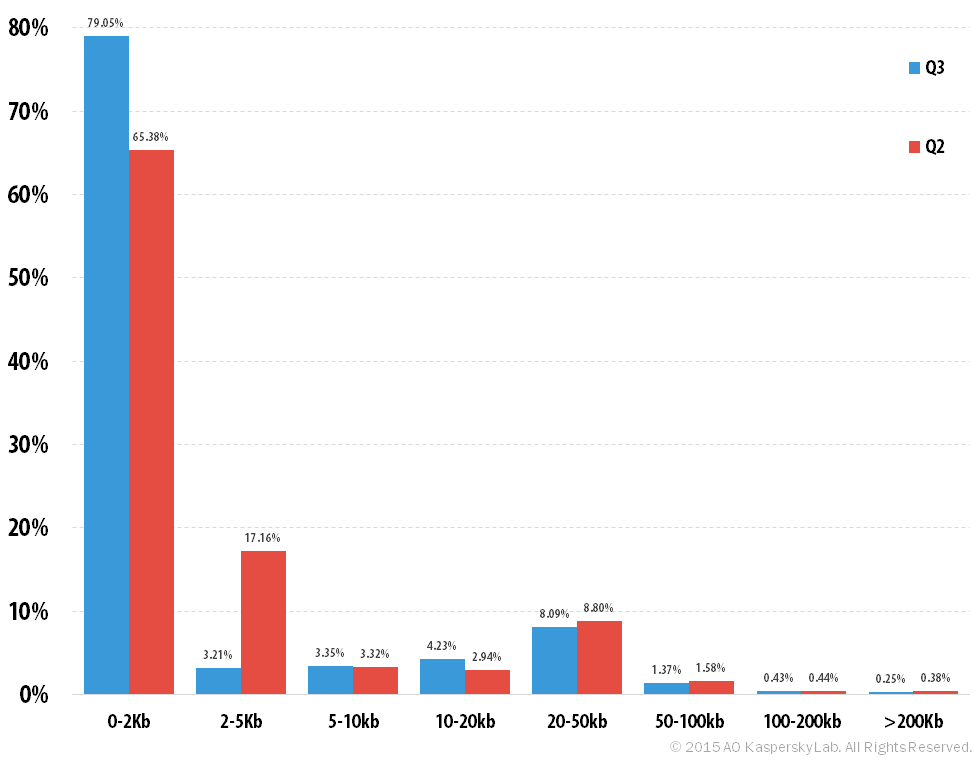

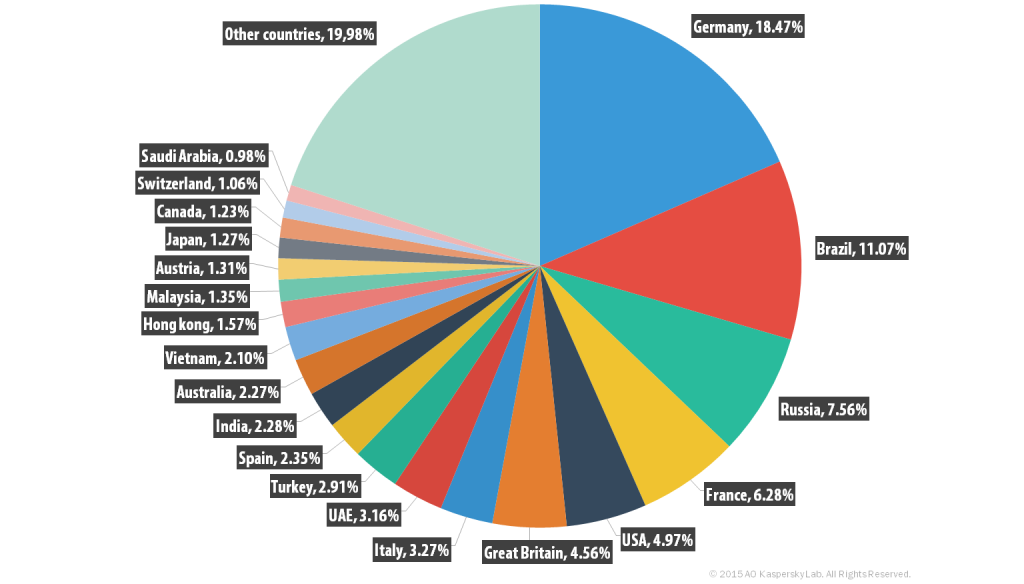
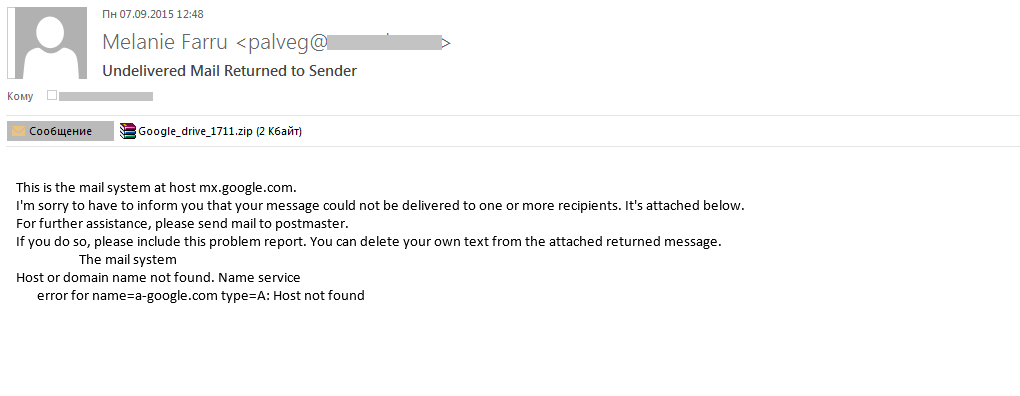
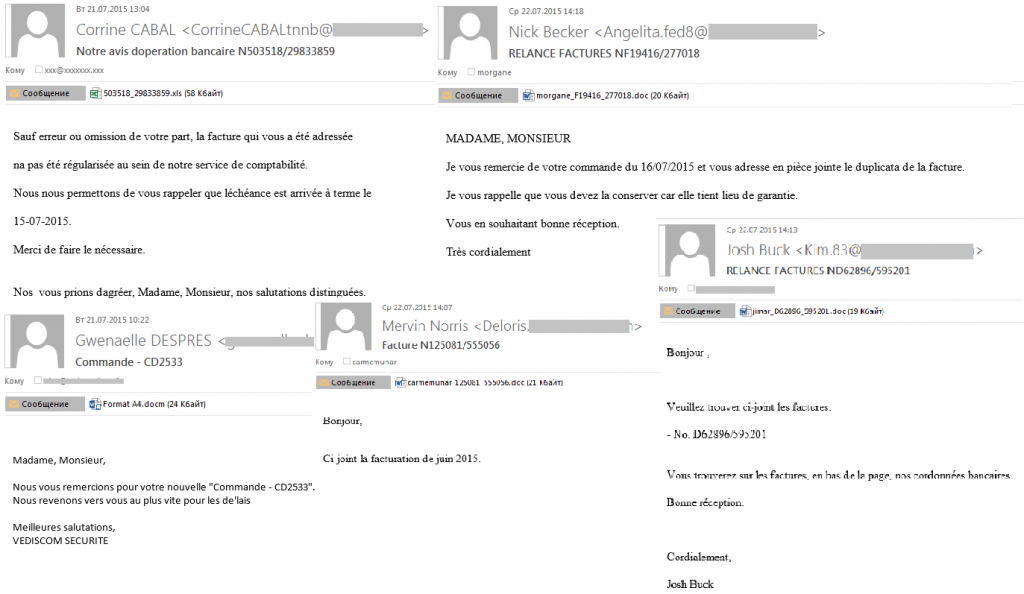
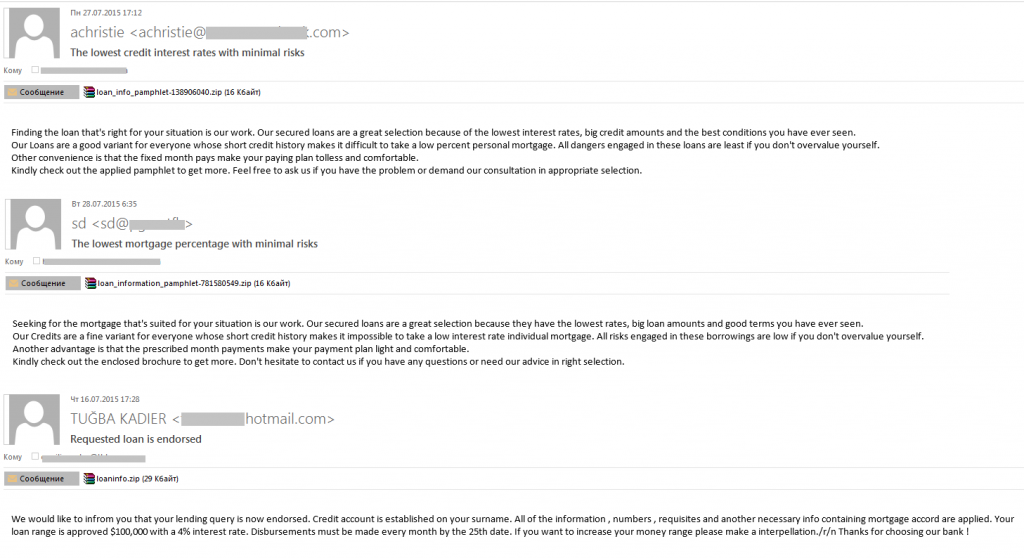
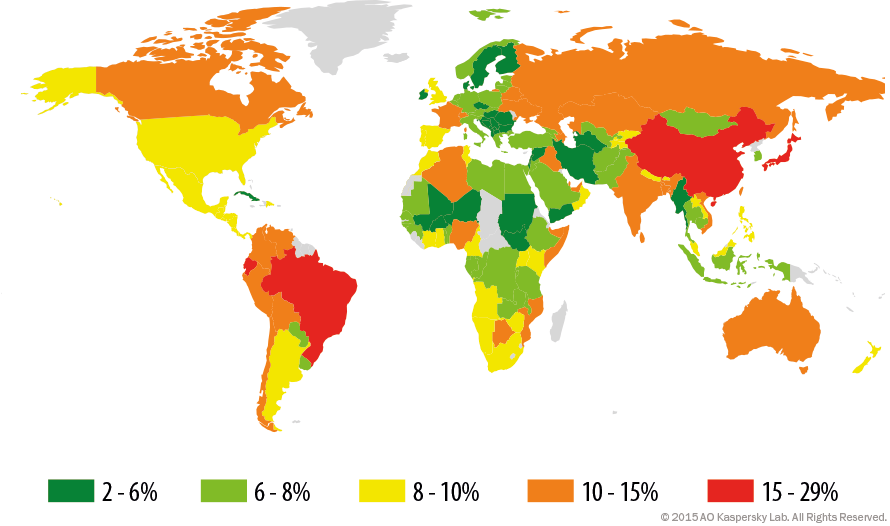
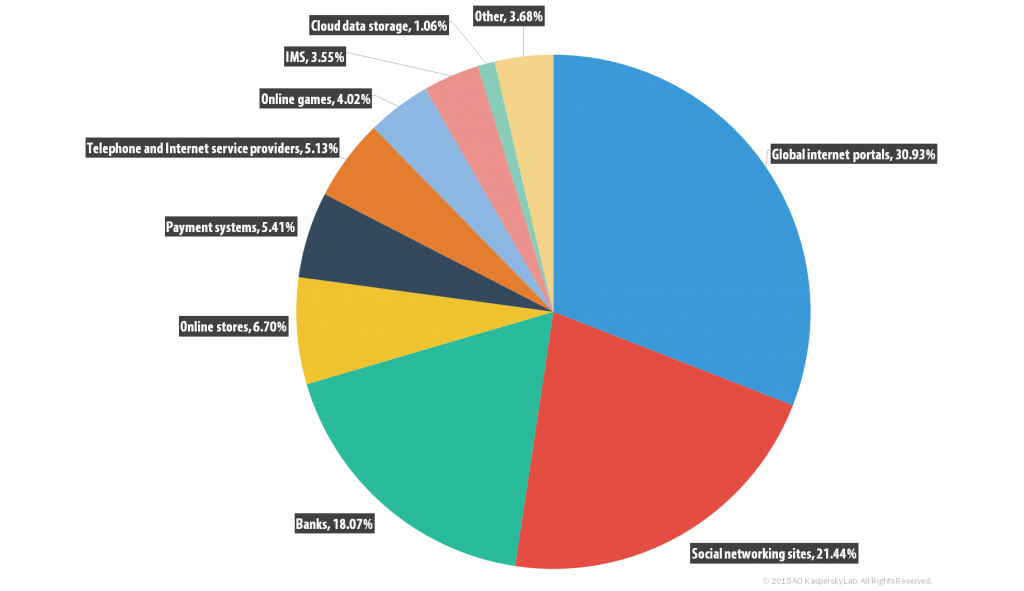
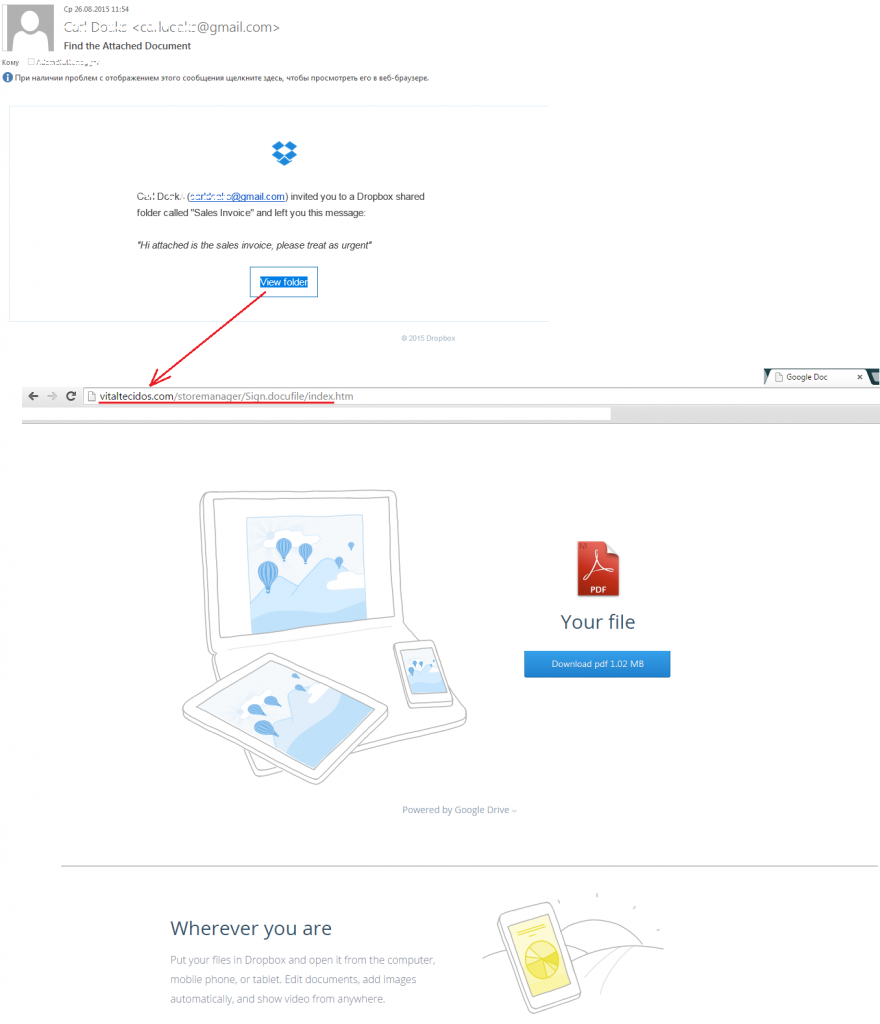
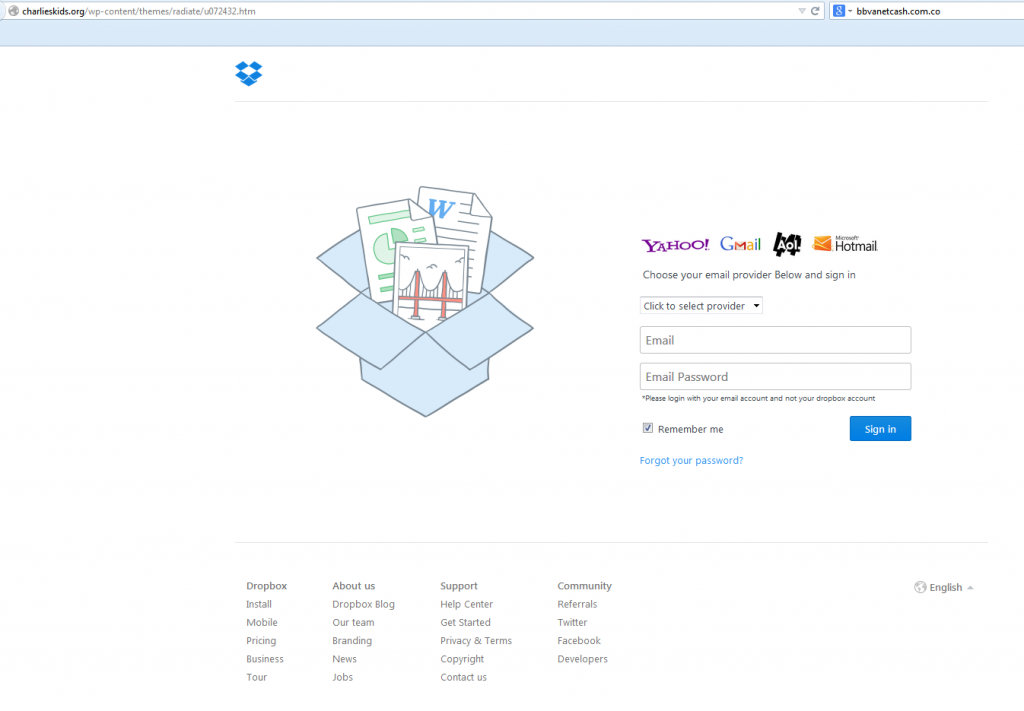
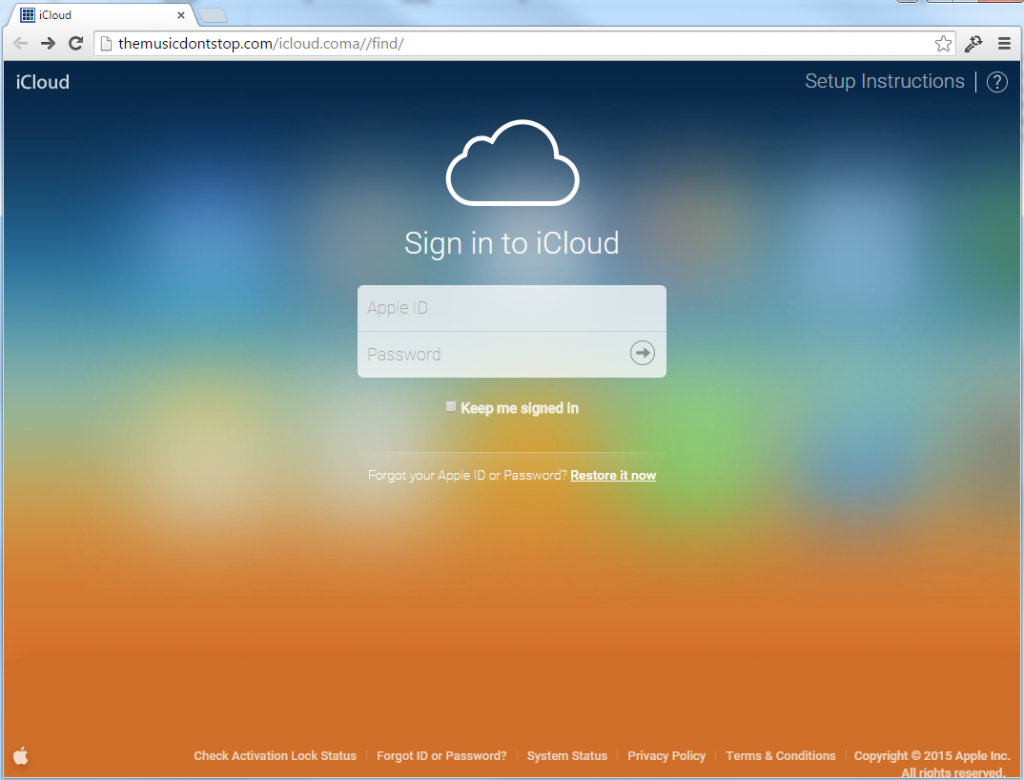



















Mahesh
Very Informative… Thanks.